US Charges Chinese National With Providing Missile Materials To Iran

The United States has charged a Chinese national with violating US sanctions by providing to Iran materials used to produce ballistic missiles, federal prosecutors in said Tuesday.

The United States has charged a Chinese national with violating US sanctions by providing to Iran materials used to produce ballistic missiles, federal prosecutors in said Tuesday.
Xiangjiang Qiao works at Sinotech Dalian Carbon and Graphite Manufacturing Corporation, a China-based company which the US Treasury Department placed on a sanctions list in 2014 for helping Iran buy a material that can be used in the nose of intercontinental ballistic missiles. Sanctions bar companies from using the US financial system.
Qiao between 2019 and 2022 helped supply Iran with isostatic graphite, an ultra-fine grain used to make rocket nozzles, and set up a bank account in the name of a front company to receive $15,000 in transfers from a US bank in connection with the transactions, prosecutors said.
Qiao, 39, is in China and has not been arrested, prosecutors said. He faces charges including sanctions evasion, bank fraud and money laundering.
The US has sanctioned dozens of individuals and entities in recent years for involvement in schemes to supply sensitive technology or money laundering for Iran’s military and nuclear programs.
The Justice Department announced a series of criminal cases Tuesday tracing the illegal flow of sensitive technology, including Apple's software code for self-driving cars and materials used for missiles, to foreign adversaries like Russia, China and Iran.
With reporting by Reuters, AP

A secret underground drone base of Iran’s Revolutionary Guards (IRGC) has been uncovered by an Israeli security think tank.
The location in the southwest of Iran was revealed Monday by Alma center, a non-profit research organization which focuses on the security challenges on Israel's northern borders.
The UAV base is carved into the Zagros mountains near Shiraz, Fars province, according to a video released by Alma. The location is about 10km from Shiraz airbase, which also houses the air force's SU-24 jets of the 72nd tactical fighter squadron.
The base’s proximity to the strait of Hormuz in the Persian Gulf “threatens the entire Middle East at any given moment”, Alma warned.
Satellite footage provided by the center shows the drone base consists of a site for a “swarm” – a coordinated unit of multiple drones – and a command-and-control center.
The swarm base has at least five UAV launch silos as well as three access tunnels and a loading dock tunnel.
The UAVs that can be launched from the silos are Shahed, the same kamikaze attack drones the regime is supplying to Russia for its invasion of Ukraine.
The underground base is at least 3km long with an entrance near Shiraz industrial town, where parts are probably made or assembled.
The 2,000km range of Iran’s attack UAVs drones allowed it attack sites beyond Israel as far as Cairo, Alma claimed.
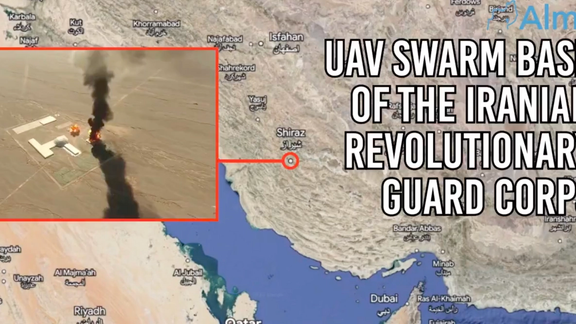
The Iranian authorities have released images of drone bases but never disclosed their locations.
Last year in March, Israeli media reported that an Israeli aerial attack destroyed hundreds of drones at an IRGC airbase in the Iranian province of Kermanshah. Six Israeli drones struck the base in Mahidasht region near the western city of Kermanshah in a covert operation. In response, Tehran pounded Iraq’s Kurdistan region with missiles for week, claiming the targets were bases used by Israel.
In April, Iran released footage of top brass visiting a large underground base housing a large number of drones. Earlier, in February, Iran revealed an underground air force base called
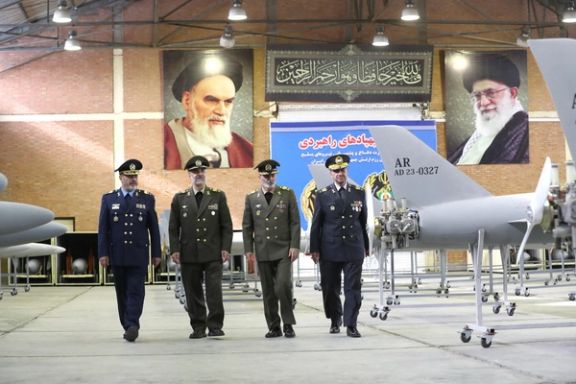
"Eagle 44", saying it is the first of its kind large enough to house fighter jets, with reports that the base is also capable of storing and operating drones. Iran’s lack of a viable modern air force due to long-running sanctions and arms embargoes leaves it mostly relying on missiles and drones.
There has been growing speculation recently over an Israeli air attack on Iran to contain its military program. The US and Israel held large-scale drills in January in possible preparation for such an attack.
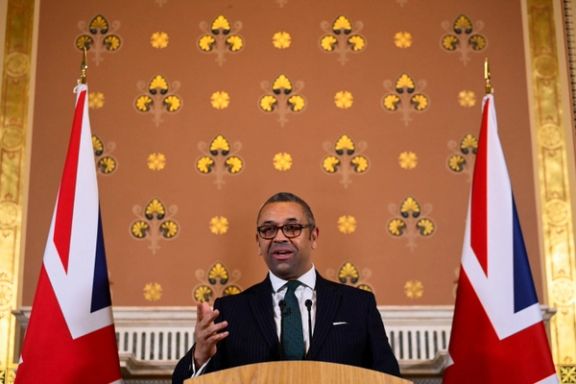
The UK’s Foreign Secretary says he continues to determine whether to ban Iran’s Revolutionary Guard (IRGC) as a terrorist group.
In an interview with Fox News Digital on Monday, James Cleverly said: "We, of course, keep these decisions under constant review, but the decisions that we make within the UK will always be based on our, you know, the primary commitment, which is to keep British nationals safe, to keep people in the region safe."
The decisions include whether "to curtail the IRGC and the Iranian regime’s malign activities.”
Designating the IRGC as a terrorist group would bring the UK in line with the US.
Cleverly underscored the need for the UK and US to remain united on key issues, including the potential nuclear threats posed by Russia and Iran.
He said: "Preventing Iran from developing a nuclear weapon remains an absolute priority in U.K. foreign policy.
"We’ve worked very, very closely with the members of the Quad, France, Germany, the United States … in imposing sanctions, and obviously we know very closely what we're doing in conjunction with the International Atomic Energy Agency to prevent Iran acquiring a nuclear weapon."
Stopping Iran from acquiring nuclear weapons will always be a priority of UK foreign policy, said Cleverly.
In recent months, a number of members of the British House of Commons have put pressure on Prime Minister Rishi Sunak's government to proscribe the IRGC as a terrorist organization. They include British Home Secretary Suella Braverman.
Prominent political opposition activists, among them Prince Reza Pahlavi, Masih Alinejad, Nazanin Boniadi and Shirin Ebadi, have met British representatives to call for the Revolutionary Guards to be branded terrorists.
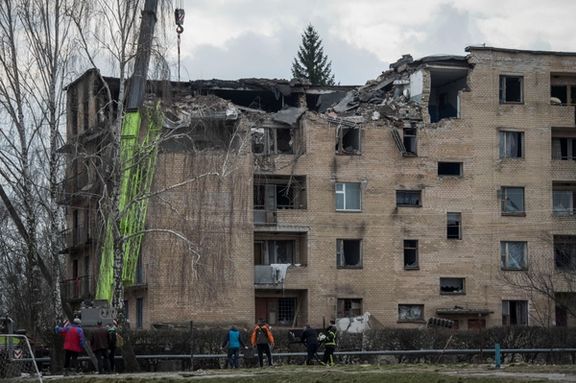
The United States believes Russia and Iran are expanding an unprecedented defense partnership that will help Moscow prolong its war in Ukraine, the White House said Monday.
As part of the cooperation, Iran is providing Russia with one-way attack drones, including more than 400 since August, national security adviser John Kirby said at a news briefing.
"This is about a burgeoning defense relationship" that allows Russia to kill more people in Ukraine and also enables Iran to stock up on its military hardware and pose a greater threat to its neighbors, Kirby told reporters.
The US and its European allies have already imposed sanctions on individuals and entities for their role in Tehran’s drone program and their delivery to Russia. Washington has also listed Tehran’s military cooperation with Moscow as one of the impediments to resuming talks aimed at limiting Iran’s nuclear program and lifting crippling economic sanctions.
Drones are the primary military help Iran is providing to Russia, which is seeking to acquire advanced level types, he said.
Russia uses Iranian Shahed drones mainly to target civilian infrastructure and also swarm Ukrainian air defenses during large-scale missile strikes. The tactic was repeatedly used last year when Moscow tried to cripple Ukraine’s energy sector.
The Unites States will be announcing additional designations targeting increased military cooperation between Russia and Iran, Kirby added.
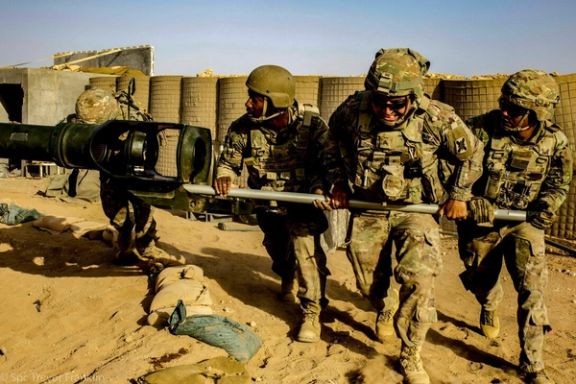
A US official says several American civilians and military personnel were wounded and a contractor was killed by a drone attack from an Iranian-backed militia in northern Iraq on March 23.
The origin of that attack had never been reported, but a senior US military official acknowledged it to The Wall Street Journal on Saturday.
As a result of the attack on a maintenance hangar near Hasakah, Syria, the US contractor was killed, making it the first American fatality since Biden took office. Injuries also affected 24 US service members, many of whom suffered traumatic brain injuries.
“When that attack happened, we did not know the launch point. We were able to exploit the engine of the drone, which had a serial number, which clearly tied it back to Iran,” the senior US official said.
“We’re not looking to get into tit for tat skirmishes with these groups, which some of the groups want us to do,” said the senior US official. “Our policy is to hold Iran accountable for all these attacks.”
It is clear from the strikes that the Biden administration faces difficulties in the Middle East as it shifts its military focus to deterring China and Russia.
Additionally, it highlights the challenges the United States faces in coming up with a policy to deal with Iraq 20 years after Saddam Hussein's regime fell.
Several former officials and experts have criticized the administration's approach for downplaying problems in Iraq, such as those caused by militias supported by Tehran.
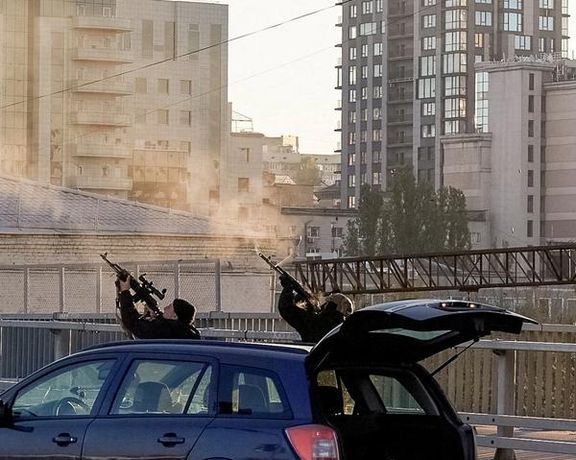
Four Iranian-made kamikaze drones launched by Russia have been shot down by Ukraine’s air defense, according to Kiev officials.
Ukraine's Air Force Command says it brought down the Shahed pilotless vehicles overnight, along with a Russian-made Orlan-10 drone.
The clash took place in the air over the northeast of Ukraine.
Russia has repeatedly used Iran-made drones as well as guided bombs in its invasion of Ukraine.
Russian long-range missile stockpiles have dwindled after repeated attacks on civilian targets since October when Moscow also began using hundreds of Shahed suicide drones, supplied in defiance of sanctions against weapons sales to the Moscow regime.
Iran first denied it had supplied drones to Russia but in early November foreign minister Hossein Amir-Abdollahian admitted the deliveries, but claimed they were sent before the Russian invasion.
There have been intelligence reports that Tehran might be planning to also supply long-range missiles to Russia.
The US and its NATO allies have strongly condemned Iran’s drone deliveries to Russia. Washington, which has stopped nuclear talks with Tehran, has indicated that it expects the deliveries to stop before any further negotiations take place.
Iran’s Supreme Leader Ali Khamenei completely denied Iran’s involvement in the war during a speech he delivered in mid-March.
Ukraine has had increasing success in shooting down the relatively slow-flying Iranian drones. On December 5, the military said it had downed 60 of 70 Shahed drones, but Kiev continues to request reinforcements to its air defense systems from the West.